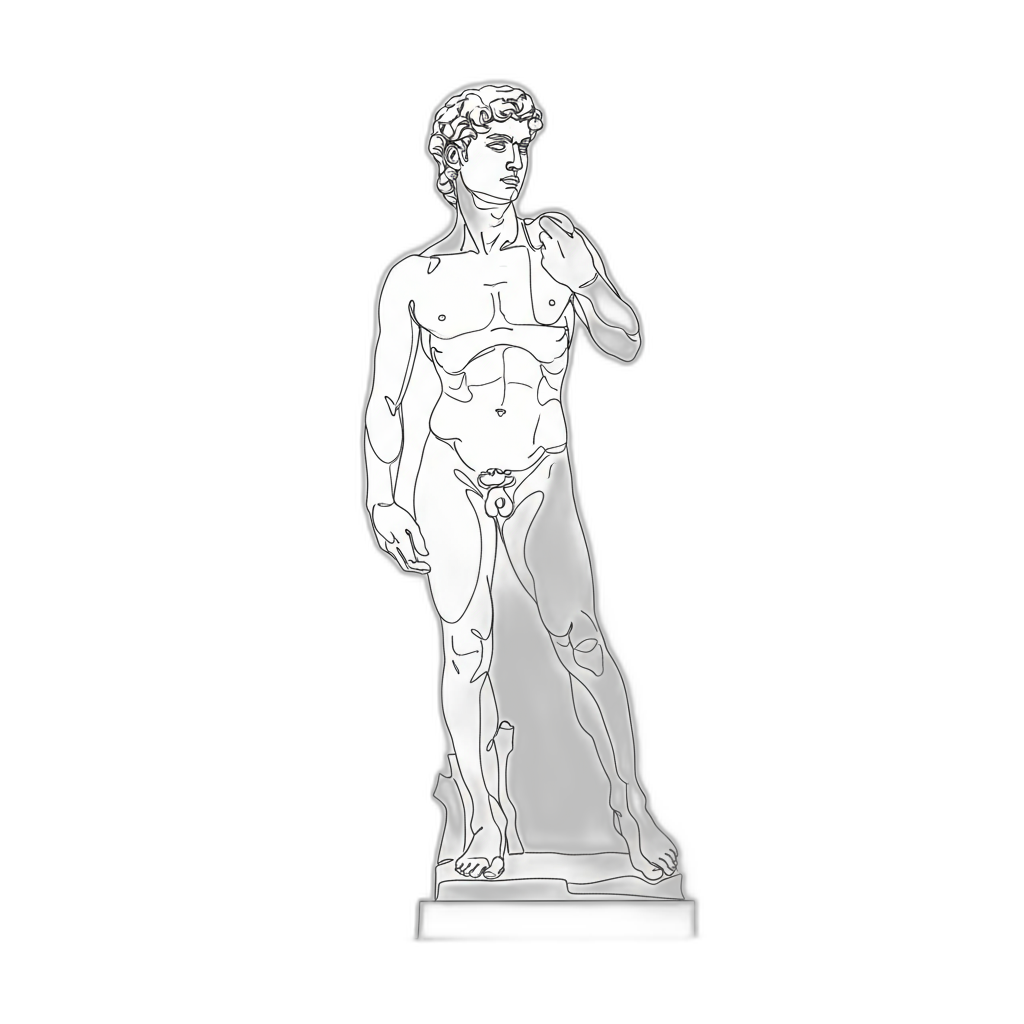Thank you! Your submission has been received!
Oops! Something went wrong while submitting the form.

Nationwide Service
Onsite or Online
USPAP-Compliant
IRS Qualified
DEFENSIBLE, USPAP-COMPLIANT APPRAISAL REPORTS — ACCEPTED BY 10,000+ ORGANIZATIONS






5-Star Service, Trusted & Loved by Hundreds
{{sectionName}}

This is some text inside of a div block.
This is some text inside of a div block.
Starts at
This is some text inside of a div block.
This is some text inside of a div block.
This is some text inside of a div block.
Starts at
This is some text inside of a div block.
{{feeRangeHeader}}
This is some text inside of a div block.
Most Household Goods engagements fall within this range. Larger or unusually complex collections may require a custom quote.
{{pricingByHeader}}
{{pricingBySubheader}}
This is some text inside of a div block.
This is some text inside of a div block.
This is some text inside of a div block.
What Drives Cost?
Number of items to be appraised
Number of items to be appraised
Number of items to be appraised
{{sectionName}}

This is some text inside of a div block.
This is some text inside of a div block.
Starts at
This is some text inside of a div block.
This is some text inside of a div block.
This is some text inside of a div block.
Starts at
This is some text inside of a div block.
{{feeRangeHeader}}
This is some text inside of a div block.
Most Household Goods engagements fall within this range. Larger or unusually complex collections may require a custom quote.
{{pricingByHeader}}
{{pricingBySubheader}}
This is some text inside of a div block.
This is some text inside of a div block.
This is some text inside of a div block.
What Drives Cost?
Number of items to be appraised
Number of items to be appraised
Number of items to be appraised
{{sectionName}}

This is some text inside of a div block.
This is some text inside of a div block.
Starts at
This is some text inside of a div block.
This is some text inside of a div block.
This is some text inside of a div block.
Starts at
This is some text inside of a div block.
{{feeRangeHeader}}
This is some text inside of a div block.
Most Household Goods engagements fall within this range. Larger or unusually complex collections may require a custom quote.
{{pricingByHeader}}
{{pricingBySubheader}}
This is some text inside of a div block.
This is some text inside of a div block.
This is some text inside of a div block.
What Drives Cost?
Number of items to be appraised
Number of items to be appraised
Number of items to be appraised
{{sectionName}}

This is some text inside of a div block.
This is some text inside of a div block.
Starts at
This is some text inside of a div block.
This is some text inside of a div block.
This is some text inside of a div block.
Starts at
This is some text inside of a div block.
{{feeRangeHeader}}
This is some text inside of a div block.
Most Household Goods engagements fall within this range. Larger or unusually complex collections may require a custom quote.
{{pricingByHeader}}
{{pricingBySubheader}}
This is some text inside of a div block.
This is some text inside of a div block.
This is some text inside of a div block.
What Drives Cost?
Number of items to be appraised
Number of items to be appraised
Number of items to be appraised
{{pricingSubheader}}
This is some text inside of a div block.
This is some text inside of a div block.
Starts at
This is some text inside of a div block.
This is some text inside of a div block.
This is some text inside of a div block.
Starts at
This is some text inside of a div block.
{{feeRangeHeader}}
This is some text inside of a div block.
Most Household Goods engagements fall within this range. Larger or unusually complex collections may require a custom quote.
{{pricingByHeader}}
{{pricingBySubheader}}
This is some text inside of a div block.
This is some text inside of a div block.
This is some text inside of a div block.
What Drives Cost?
Number of items to be appraised
Number of items to be appraised
Number of items to be appraised
How the Process Works
1
Appraisal Request
Submit estimate or list of items for our review
2
Quote Issued
We'll share a flat fee quote for your approval
3
Kickoff & Intake
Submit details on all of your items for our review
4
Research & Analysis
We'll conduct detailed research and prepare a written USPAP-compliant report
5
Report Delivery
Delivery of your report and supporting documents (e.g., signed IRS Form 8283) by email
Your Appraiser Search Ends Here
Your Appraiser Search Ends Here
.avif)

Nationwide Coverage – Appraisals Anywhere in the US
Our extensive network of professional appraisers ensures you receive accurate, trusted valuations wherever you are.

Get it done Onsite or Online
Choose between a seamless online process—preferred by most clients—or in-person service for complex assignments.

Any Asset, Covered
Nationwide appraisers for every asset— from buildings & businesses to vehicles & valuables.

Defensible for Any Purpose
For donations, estates, insurance, and more—our USPAP-compliant reports are built to meet the highest standards.
No items found.
A European art appraisal is a comprehensive professional evaluation that meticulously determines the value, authenticity, and significance of artworks created by European artists across diverse periods, styles, and mediums. This sophisticated process serves as a critical resource for collectors, museums, estates, and insurers seeking authoritative insights into artistic assets.
The appraisal process involves multiple sophisticated assessment dimensions. Authentication stands as a foundational element, where experts rigorously verify the artwork's origin, confirming the artist's identity and establishing the piece's legitimacy through detailed examination of techniques, signatures, and documented provenance.
Market valuation represents another crucial component, requiring extensive analysis of current art market trends, historical sales data, and contemporary demand for specific artists or artistic movements. Appraisers conduct nuanced comparisons with similar works, developing a precise understanding of the artwork's monetary worth.
Condition assessment plays a significant role in determining value, with professionals conducting thorough evaluations of the artwork's physical state. Factors such as preservation quality, potential damage, restoration history, and overall structural integrity are carefully examined and documented.
Cultural context adds another layer of complexity to the appraisal. Experts consider the artwork's historical significance, its potential impact on artistic movements, and its broader cultural relevance. This holistic approach ensures a comprehensive understanding that extends beyond mere monetary value.
The resulting appraisal documentation provides a detailed, authoritative report encompassing comprehensive findings, professional assessments, high-quality photographs, and expert opinions. This documentation serves multiple critical purposes, including insurance valuation, tax assessment, estate planning, and potential sales strategies.
By engaging qualified professionals with specialized expertise in European art, collectors and stakeholders can obtain a precise, credible evaluation that captures the intricate nuances of artistic value and historical significance.
The appraisal process involves multiple sophisticated assessment dimensions. Authentication stands as a foundational element, where experts rigorously verify the artwork's origin, confirming the artist's identity and establishing the piece's legitimacy through detailed examination of techniques, signatures, and documented provenance.
Market valuation represents another crucial component, requiring extensive analysis of current art market trends, historical sales data, and contemporary demand for specific artists or artistic movements. Appraisers conduct nuanced comparisons with similar works, developing a precise understanding of the artwork's monetary worth.
Condition assessment plays a significant role in determining value, with professionals conducting thorough evaluations of the artwork's physical state. Factors such as preservation quality, potential damage, restoration history, and overall structural integrity are carefully examined and documented.
Cultural context adds another layer of complexity to the appraisal. Experts consider the artwork's historical significance, its potential impact on artistic movements, and its broader cultural relevance. This holistic approach ensures a comprehensive understanding that extends beyond mere monetary value.
The resulting appraisal documentation provides a detailed, authoritative report encompassing comprehensive findings, professional assessments, high-quality photographs, and expert opinions. This documentation serves multiple critical purposes, including insurance valuation, tax assessment, estate planning, and potential sales strategies.
By engaging qualified professionals with specialized expertise in European art, collectors and stakeholders can obtain a precise, credible evaluation that captures the intricate nuances of artistic value and historical significance.
European art appraisers represent a diverse and specialized field, with professionals focusing on distinct areas of artistic expertise. These experts play a critical role in evaluating and understanding the complex world of European art, each bringing unique skills and knowledge to their respective domains.
Fine art appraisers concentrate on comprehensive evaluations of paintings, sculptures, and printmaking, with expertise spanning from classical old masters to contemporary artists. Their assessments involve intricate analysis of historical significance, artistic provenance, and current market dynamics, ensuring precise valuations that reflect the nuanced world of European artistic creation.
Decorative arts specialists occupy a unique niche, examining functional and aesthetic objects like furniture, ceramics, and textiles. Their expertise extends beyond simple monetary valuation, encompassing deep understanding of design movements, historical contexts, and craftsmanship techniques that define specific artistic periods and styles.
Antique appraisers focus on items produced over a century ago, requiring extensive knowledge of historical manufacturing processes, material characteristics, and preservation techniques. Their evaluations are particularly complex, demanding expertise in authentication, condition assessment, and understanding of historical market trends.
Modern and contemporary art appraisers represent a dynamic segment, tracking rapidly evolving artistic landscapes. These professionals must remain constantly informed about emerging artists, auction trends, exhibition histories, and shifting collector interests within the European art scene.
Some appraisers further specialize in specific artistic mediums like photography or prints, developing deep, technical understanding of production methods, edition sizes, and sector-specific valuation criteria. Their targeted expertise allows for nuanced and precise assessments of specialized artistic works.
The diversity of European art appraisal reflects the rich, multifaceted nature of artistic expression, with each specialist contributing unique perspectives and expertise to understanding and valuing artistic creations.
Fine art appraisers concentrate on comprehensive evaluations of paintings, sculptures, and printmaking, with expertise spanning from classical old masters to contemporary artists. Their assessments involve intricate analysis of historical significance, artistic provenance, and current market dynamics, ensuring precise valuations that reflect the nuanced world of European artistic creation.
Decorative arts specialists occupy a unique niche, examining functional and aesthetic objects like furniture, ceramics, and textiles. Their expertise extends beyond simple monetary valuation, encompassing deep understanding of design movements, historical contexts, and craftsmanship techniques that define specific artistic periods and styles.
Antique appraisers focus on items produced over a century ago, requiring extensive knowledge of historical manufacturing processes, material characteristics, and preservation techniques. Their evaluations are particularly complex, demanding expertise in authentication, condition assessment, and understanding of historical market trends.
Modern and contemporary art appraisers represent a dynamic segment, tracking rapidly evolving artistic landscapes. These professionals must remain constantly informed about emerging artists, auction trends, exhibition histories, and shifting collector interests within the European art scene.
Some appraisers further specialize in specific artistic mediums like photography or prints, developing deep, technical understanding of production methods, edition sizes, and sector-specific valuation criteria. Their targeted expertise allows for nuanced and precise assessments of specialized artistic works.
The diversity of European art appraisal reflects the rich, multifaceted nature of artistic expression, with each specialist contributing unique perspectives and expertise to understanding and valuing artistic creations.
European art represents a profound intersection of cultural heritage and financial significance. An art appraisal serves as a critical tool for collectors, investors, and enthusiasts seeking comprehensive understanding of their artistic assets.
Insurance protection stands as a primary motivation for obtaining an appraisal. Detailed documentation provides essential safeguards against potential loss, theft, or damage, ensuring collectors can accurately replace or compensate for valuable pieces. Insurers rely on precise valuations to determine appropriate coverage levels.
Estate planning benefits significantly from professional art appraisals. When transferring collections to heirs, a comprehensive valuation offers clarity about financial worth, facilitating equitable distribution and providing crucial insights into potential tax implications. This becomes especially important for complex or high-value collections.
Tax considerations represent another critical dimension of art appraisals. Donations exceeding specific monetary thresholds require formal documentation to qualify for potential tax deductions. Collectors can strategically leverage these appraisals to maximize financial benefits while supporting cultural institutions.
Legal proceedings frequently demand accurate art valuations. During scenarios like divorce settlements or business dissolutions, professional appraisals provide objective, defensible assessments of artistic assets. These evaluations help ensure fair negotiations and transparent asset division.
Market transactions also benefit from professional appraisals. Buyers and sellers gain valuable insights into current market conditions, enabling more informed decision-making. Understanding an artwork's true value prevents potential overpricing or undervaluation.
Beyond immediate financial considerations, appraisals offer deeper understanding of artistic provenance, historical context, and potential future value trajectories. Experienced appraisers provide nuanced perspectives that extend well beyond simple monetary assessment.
Ultimately, a comprehensive art appraisal represents more than a financial document—it's a strategic tool for preservation, protection, and informed ownership of cultural treasures.
Insurance protection stands as a primary motivation for obtaining an appraisal. Detailed documentation provides essential safeguards against potential loss, theft, or damage, ensuring collectors can accurately replace or compensate for valuable pieces. Insurers rely on precise valuations to determine appropriate coverage levels.
Estate planning benefits significantly from professional art appraisals. When transferring collections to heirs, a comprehensive valuation offers clarity about financial worth, facilitating equitable distribution and providing crucial insights into potential tax implications. This becomes especially important for complex or high-value collections.
Tax considerations represent another critical dimension of art appraisals. Donations exceeding specific monetary thresholds require formal documentation to qualify for potential tax deductions. Collectors can strategically leverage these appraisals to maximize financial benefits while supporting cultural institutions.
Legal proceedings frequently demand accurate art valuations. During scenarios like divorce settlements or business dissolutions, professional appraisals provide objective, defensible assessments of artistic assets. These evaluations help ensure fair negotiations and transparent asset division.
Market transactions also benefit from professional appraisals. Buyers and sellers gain valuable insights into current market conditions, enabling more informed decision-making. Understanding an artwork's true value prevents potential overpricing or undervaluation.
Beyond immediate financial considerations, appraisals offer deeper understanding of artistic provenance, historical context, and potential future value trajectories. Experienced appraisers provide nuanced perspectives that extend well beyond simple monetary assessment.
Ultimately, a comprehensive art appraisal represents more than a financial document—it's a strategic tool for preservation, protection, and informed ownership of cultural treasures.
In the digital era, obtaining a professional European Art appraisal online has become increasingly seamless and sophisticated. Expert appraisers now leverage advanced technological tools to conduct comprehensive remote evaluations that maintain the highest standards of professional assessment.
The online appraisal process typically begins with the art owner submitting high-resolution digital photographs capturing the artwork from multiple angles. These images allow experienced appraisers to meticulously examine critical details such as condition, artistic technique, signature authenticity, and potential historical significance. Supplementary documentation like provenance records, historical certificates, and previous valuation reports further enhance the accuracy of the assessment.
Modern appraisal methodologies incorporate interactive digital consultation techniques. Many professionals utilize video conferencing platforms to conduct real-time examinations, enabling direct communication and allowing appraisers to request immediate additional visual information or clarification about the artwork's background.
Professional online appraisals adhere to rigorous industry standards, including the Uniform Standards of Professional Appraisal Practice (USPAP). This ensures that remote evaluations maintain the same level of precision and integrity as traditional in-person assessments. The digital approach offers unprecedented convenience, allowing art owners to receive expert valuations without geographical limitations.
The comprehensive online process considers multiple valuation factors, including current market trends, historical context, artist reputation, artwork condition, and potential restoration history. By combining technological capabilities with deep art historical expertise, online European Art appraisals provide nuanced, professional insights into an artwork's true market value.
The online appraisal process typically begins with the art owner submitting high-resolution digital photographs capturing the artwork from multiple angles. These images allow experienced appraisers to meticulously examine critical details such as condition, artistic technique, signature authenticity, and potential historical significance. Supplementary documentation like provenance records, historical certificates, and previous valuation reports further enhance the accuracy of the assessment.
Modern appraisal methodologies incorporate interactive digital consultation techniques. Many professionals utilize video conferencing platforms to conduct real-time examinations, enabling direct communication and allowing appraisers to request immediate additional visual information or clarification about the artwork's background.
Professional online appraisals adhere to rigorous industry standards, including the Uniform Standards of Professional Appraisal Practice (USPAP). This ensures that remote evaluations maintain the same level of precision and integrity as traditional in-person assessments. The digital approach offers unprecedented convenience, allowing art owners to receive expert valuations without geographical limitations.
The comprehensive online process considers multiple valuation factors, including current market trends, historical context, artist reputation, artwork condition, and potential restoration history. By combining technological capabilities with deep art historical expertise, online European Art appraisals provide nuanced, professional insights into an artwork's true market value.
BEST-IN-CLASS APPRAISERS, CREDENTIALED BY:





